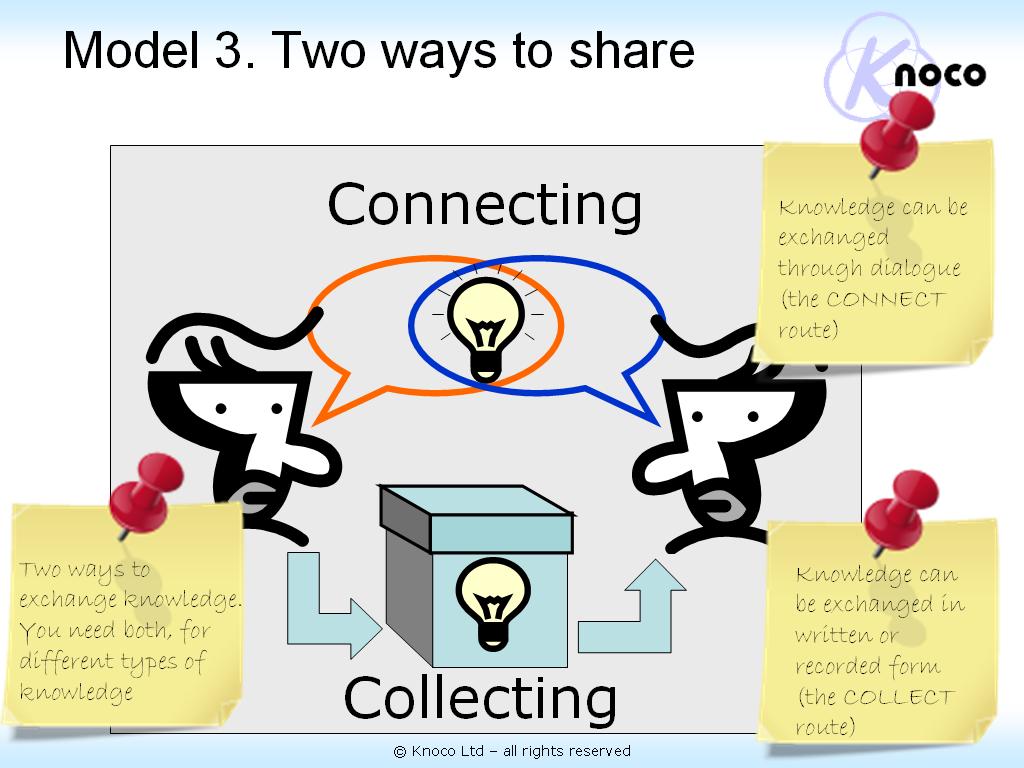 One of the earliest models in the history of Knowledge Management, and one that sometimes seems to get forgotten, is that there are two key dimensions in Knowledge Management, representing two routes between the knowledge suppler, and the knowledge user.
One of the earliest models in the history of Knowledge Management, and one that sometimes seems to get forgotten, is that there are two key dimensions in Knowledge Management, representing two routes between the knowledge suppler, and the knowledge user.These are the Connect route, and the Collect route.
The Connect route supports knowledge transfer through connecting people.
- In the Connect route, Knowledge is transferred through conversation - either face to face or electronically mediated.
- It can be supported by processes such as Peer Assist, Knowledge handover, knowledge exchange, knowledge markets, knowledge cafes, action learning, after action review, mentoring, coaching, and communities of practice.
- It can be supported by technologies such as collaboration tools, people-finders, community forums, webex, telephone and skype.
- The knowledge never needs to be written down; it can be - but it does not need to be, and knowledge can be transferred in tacit form.
- The Connect route is necessary for complex knowledge, advanced knowledge, deep skills, and highly contextual knowledge.
- The Connect route is a highly effective way to transfer knowledge, but very inefficient, as the conversation must be repeated for each knowledge user.
The Collect route supports knowledge transfer through collecting knowledge into documents.
- In the Collect route, Knowledge is transferred through documentation ("Knowledge capture"), through organisation and synthesis of that documentation, and through connecting the user with the documents, through search or through push.
- It can be supported by processes such as Retrospect, Lesson Learning, Interview, creation of Knowledge Assets, and Knowledge Synthesis.
- It can be supported by technologies such as portals, lessons management systems, search, semantic search, blogs and wikis.
- The knowledge is written down or recorded, and transferred in explicit form.
- The Collect route is ideal for relatively simple non-contextual knowledge which needs to reach a large audience, for knowledge that needs shelf life, for knowledge where no immediate user is available, and for knowledge which needs compiling and processing (such as lessons).
- The Connect route is an ineffective way to transfer knowledge, as we can only write a fraction of what we know, but very efficient, as once that fraction is captured it can be reused a thousand times.
Connect and Collect are not alternative strategies. They are two components of a single framework and a single strategy, which work in parallel.
Your organisation will contain critical knowledge of very many kinds; some of which will need to be transferred through collection and some through connection. So make sure you address both dimensions
.




No comments:
Post a Comment